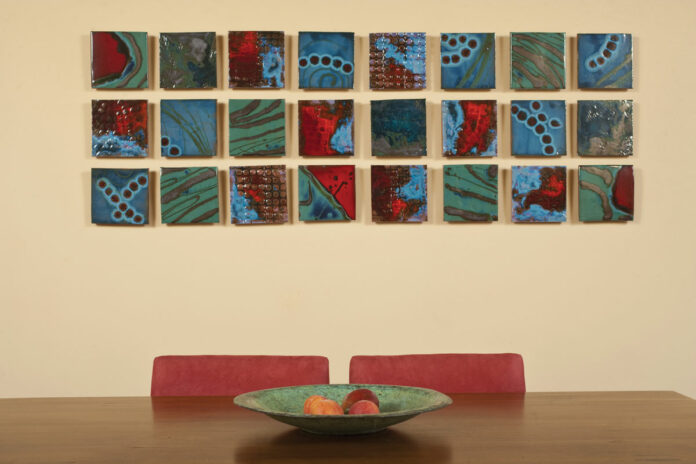Savoring the organic relationship among clay, glaze and inspiration
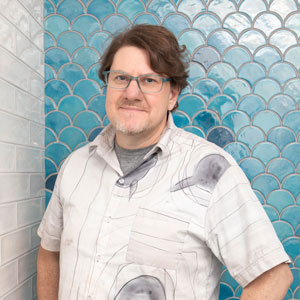

There are lots of ways to make tile. There is the commercial, precision, factory approach that minimizes imperfections and variations and provides a tile with predictable edges, minimal warpage, and glazes that can be easily and frequently replicated for volume production.
And then there is the approach taken by Josh Blanc, and Clay Squared to Infinity, the 26-year old handmade tile studio in Minneapolis. Blanc frankly glories in the surprises and serendipity offered by the clay and glazes he and his six employees transform into original works of art – and the resulting installations that feel native to their clients’ space. The tiles are distinctive, original and offer an organic, living feel to them, whether they are installed in a Victorian Craftsman, Mid-Century, or contemporary home.
From attic to internet
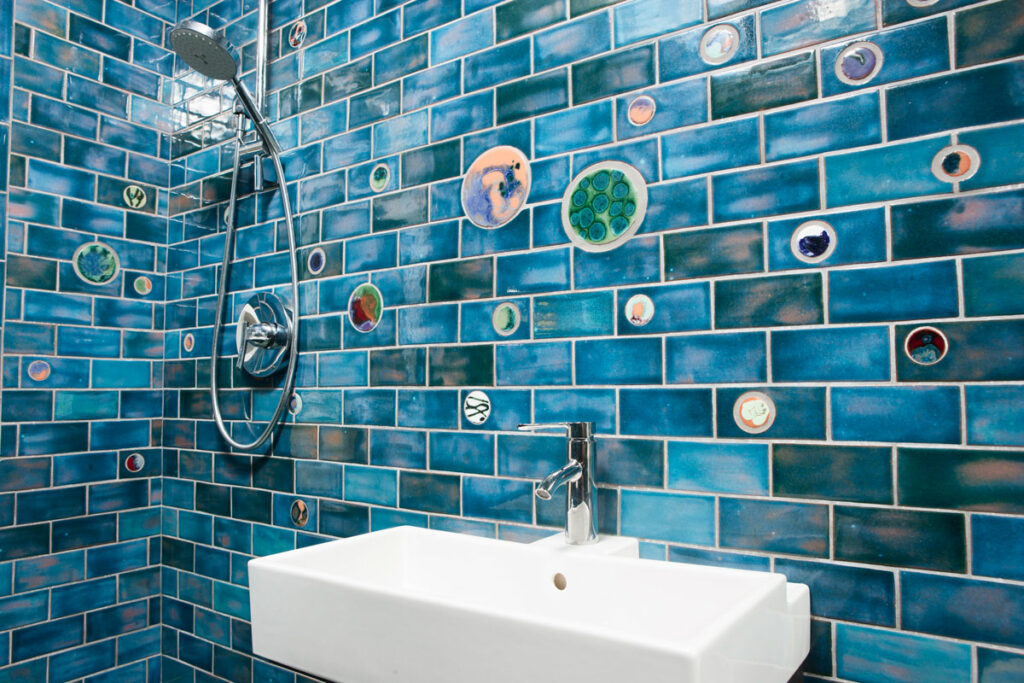

Blanc started Clay Squared to Infinity in his tiny 11′ x 11′ attic studio in November, 1996. During the intervening years, Clay Squared was housed in an old bar, and then the Keg House in the Historic Grain Belt Brewery where it resided for 14 years. Five years ago, it purchased a 12,000 sq. ft. building on NE Howard Street in Minneapolis. Three years ago it began developing its showroom and studio in a 3,200 sq. ft. portion of the space, renting out other parts of the building.
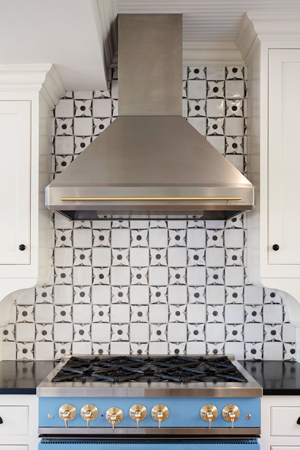

The main equipment Clay Squared uses to make tile is a Northstar extruder and rolling pin, though it has added a CNC machine and Peter Pugger over the years.
Also key to the company’s growth has been Blanc’s own investment in hiring quality people, promoting tiles through quality photography, and developing full-color brochures and planning guides. He also is well established on the internet with a feature-rich website and online shopping experience.
That internet presence was a sensation during the pandemic, resulting in a “massive influx of work,” he said. “We have doubled in size mainly due to our internet presence, with all the tools we created to help clients answer their questions and solve their tile challenges to create the tile installation they are
looking for.”
Low-tech methods, inspired design
Blanc has an intuitive way of designing his tiles, informed by architecture, art, and historical designs. He decorates tiles with Medieval Floral carvings or antique stamps that he’s purchased or made on the CNC machine. Blanc uses low-tech, manual techniques and tools like pizza cutters, X-Acto blades, rolling pins, extruder and sheetrock boards.
“I like to work very fast and I like expressive ways clay and glazes work together,” he said. “I don’t seek to control the clay and glazes, as I am more interested in finding anomalies and one-of–a-kind glazing blends to see what they create. The Cosmic Cloud series shows this process best. When I have seen my tiles installed, it informs me that making tiles that show the materials, the kiln’s magic and the handmade nature of the tiles are a process to creating a mural for a specific space.”
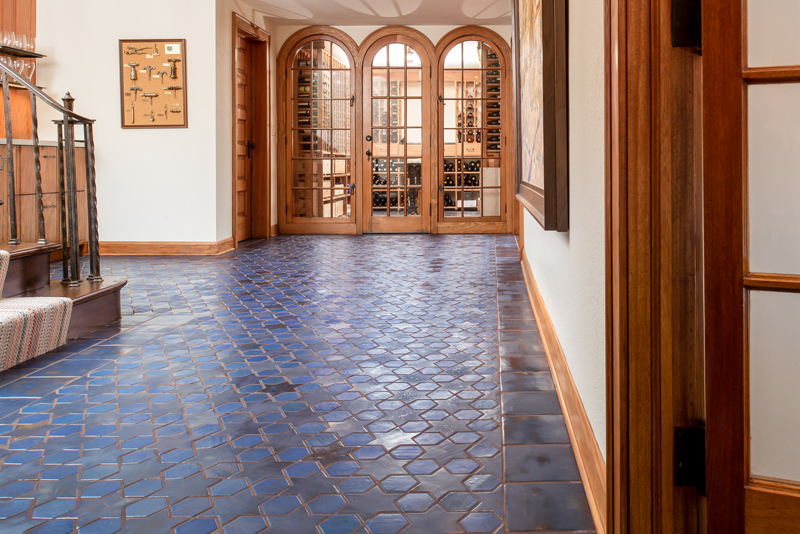

Clay Squared creates tile for many clients with circa 1890s-1950s homes. The team explores the client’s goal for their space, and offers tools like planning guides and free samples to take home or order from the website to determine what works in the home. It even offers a design service to help clients visualize the tile design in their space.
“They then can see their vision come to life and customize the design to personalize it for their home,” he said. “The goal is to help make our tiles feel like they were original to the home.” Turnaround time on orders currently is between six – 10 weeks.
Further explore the process of making tiles at https://youtu.be/-Rn34NF29pY.
Historic restoration
Clay Squared got requests to match tiles for repair almost from the beginning. But clients were often unhappy – the color might be right, but not the sheen or vice versa, Blanc said.
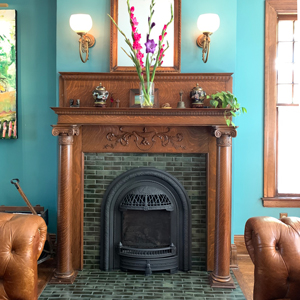

So he partnered with companies that were original makers or had mastered reproductions like Heritage Tile, B&W Tile, and Tile Restoration Center.
Blanc and Clay Squared have also forged a close relationship with the Tile Heritage Foundation over the last 20 years, chiefly with Blanc’s development of the Handmade Tile Association that he founded and ran from 1999-2016.
“We produced 17 annual directories, 16 Minnesota Tile Festivals, two national tile conferences and two tile maps in Minneapolis with Tile Heritage Foundation (THF) as the main sponsor,” he said. “The THF was a main collaborator on the annual Handmade Tile Association Directories with the use of a historic tile for the cover every year. Joe (Taylor) and Sheila (Menzies) would write articles on historic tiles to coincide with the contemporary tile makers to connect the two worlds. I have been a member of the Tile Heritage Board since 2015 as well.”
Building relationships
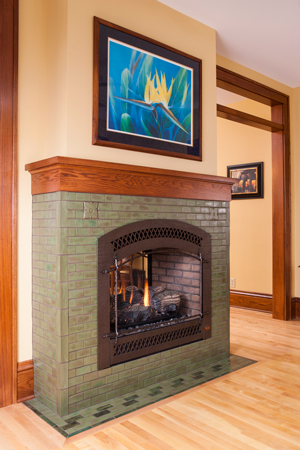

Clay Squared is a friend to the trades, designers and dealers. It offers trade discounts to dealers, and provides all the finishing touches that make a designer’s job easy and imbue a complete look to a project: bullnoses, mudcaps, base coves, and end caps. “We minimize the need to cut tiles and have great options for transitions,” Blanc said. “The finishing pieces are what make tile installation look fabulous.”
Blanc credits “the amazing people” around him that helped him succeed. “I was lucky enough to have some of the best tile contractors like Jan Hohn and Kerber Tile (both NTCA Five-Star Members) along with others to install my work,” he said. “I work in the Northeast Minneapolis Arts District with 1,200 artists and resources around me that have made our tile adventure so much more exciting. Tile making for me is not an individual business; it is a community-driven process. It has been all about relationships and learning how to continually make better tiles and enjoying the ride it takes me on.”
Editorial Director and Senior Writer for TileLetter and TileLetter ARTISAN
Lesley Goddin has been writing and journaling since her first diary at age 11. Her journey has taken her through a career in publishing and publicity, landing her the editor position of TileLetter and its special publications in 2006. Her goal is to educate, inspire, recognize and encourage those in the tile industry -- especially the tile and stone contractor.


